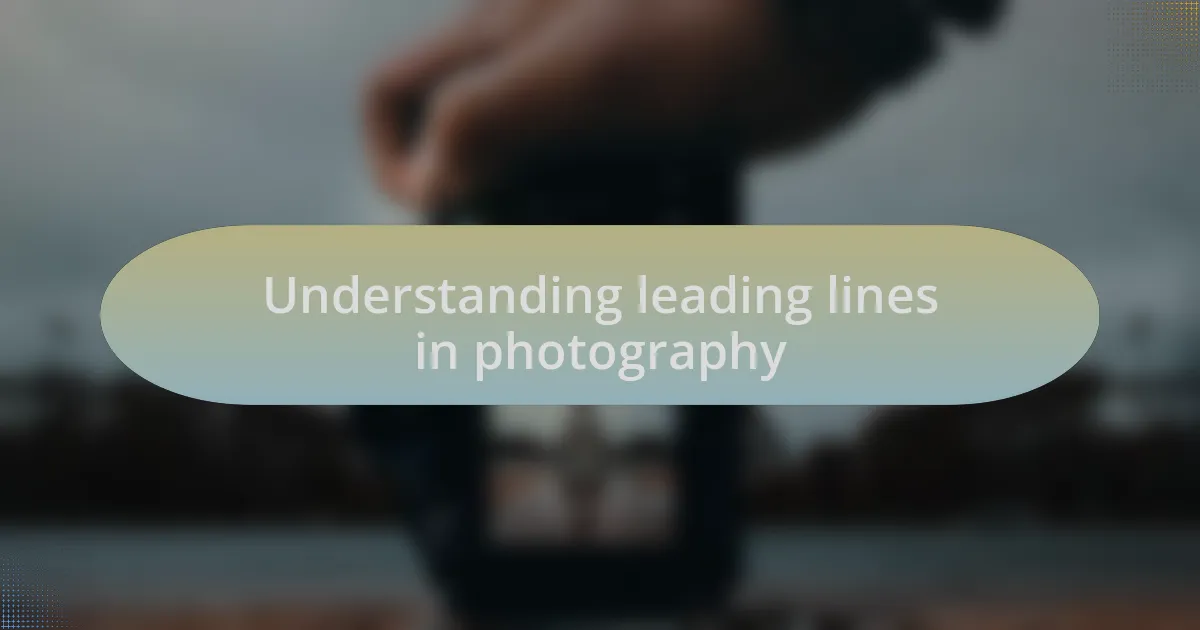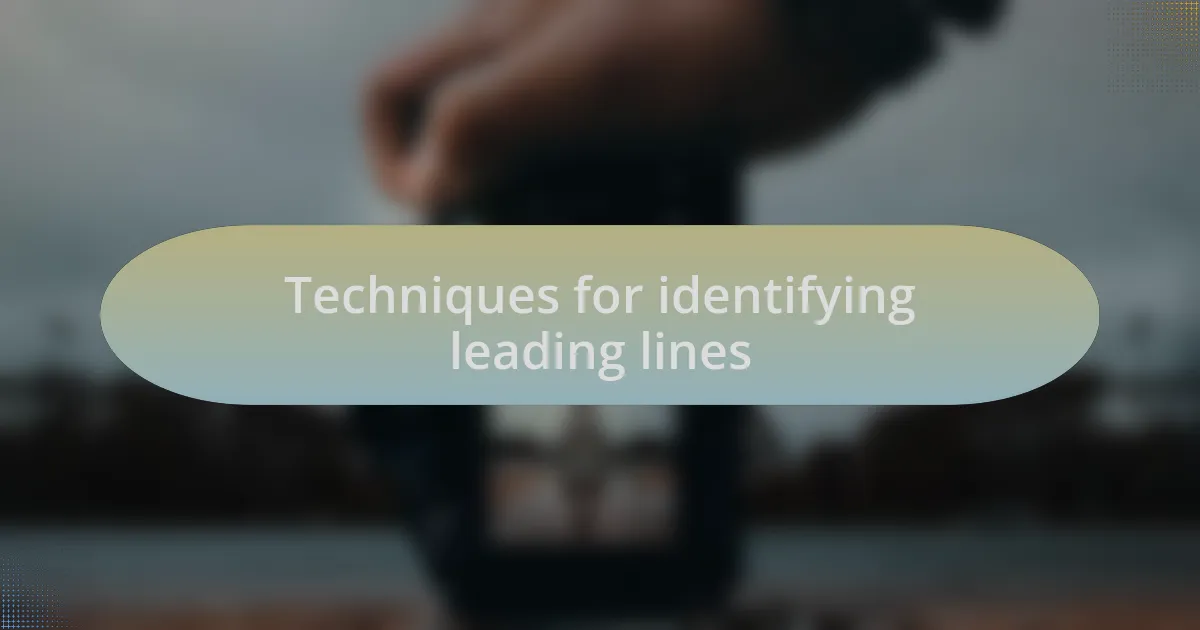Key takeaways:
- Leading lines enhance photographic composition by guiding the viewer’s eye and adding depth.
- Observation and deliberate scanning of the environment help in discovering potential leading lines.
- Utilizing camera grid lines can assist in identifying and framing leading lines effectively.
- Practicing mindfulness while photographing can increase creativity in spotting opportunities for effective compositions.

Understanding leading lines in photography
Leading lines are powerful tools in photography, guiding the viewer’s eye through the image and creating depth. I remember the first time I stumbled upon a winding path framed by trees; it pulled me in, almost inviting me to step into the scene. Have you ever felt that magnetic pull in a photograph? That’s the essence of leading lines—they create a sense of invitation and exploration.
When I’m out capturing images, I look for natural elements like roads, rivers, or even shadows that draw attention to the main subject. For instance, I once shot an old barn framed by a series of fences that led the viewer’s gaze right to its weathered doors. It wasn’t just a simple picture; it told a story of time and passage. How does the placement of such lines change your perception of a scene?
Leading lines also add balance and structure to compositions. I often experiment with different angles and perspectives to see how a slight shift can enhance the impact of these lines. Have you ever moved around a subject just to find that perfect line that leads directly to it? It’s a fascinating experience, and it truly elevates the photograph from merely capturing a moment to creating an immersive experience for anyone who views it.

Techniques for identifying leading lines
Identifying leading lines begins with being observant in any environment, whether urban or natural. I often find it helpful to walk slowly and deliberately, scanning the surroundings for potential lines. One memorable outing, I discovered a series of steps that not only led upwards but also drew my eye to a breathtaking skyline—how often do we rush past such details without a second glance?
Another technique I use is to incorporate my camera’s grid lines; this feature can illuminate the paths created by lines in the frame. While photographing a beach at sunset, I noticed how the receding tide created a natural curve leading to the horizon. Did you ever realize that something as simple as water patterns could dramatically change a photograph’s narrative? It’s all about the details.
I also recommend practicing mindfulness when framing a shot. When I was at a beautiful garden, I took a moment to sit and observe rather than immediately snap photos. This pause allowed me to see how the garden pathways intertwined, creating multiple leading lines toward vibrant flowers. Doesn’t this approach enhance your creativity in spotting opportunities that might otherwise be overlooked?